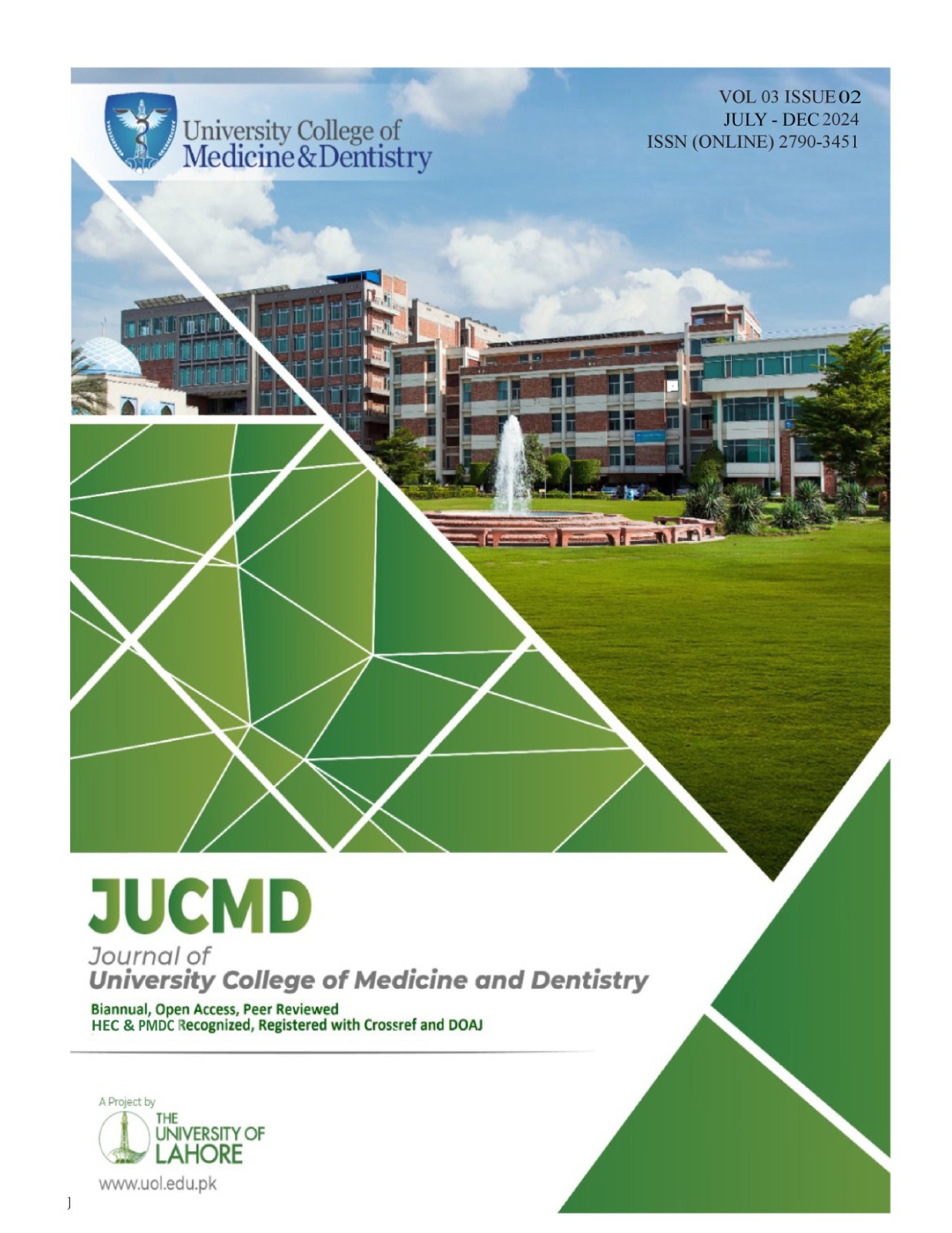Variations in Optic Cup to Disc Ratio Due to Refractive Errors and Smoking
DOI:
https://doi.org/10.51846/jucmd.v3i2.3068Keywords:
Optic Disc, Refractive Errors,, Smoking, Optic Cup to Disc RatioAbstract
Objective: To evaluate the deviation of Optic Cup to Disc Ratio with refractive errors and smoking status.
Methodology: This was a cross-sectional observational study carried out from January to October, 2016 at Dr Akil bin Abdul Kadir Institute of Ophthalmology,Karachi, Pakistan. A total of 300 eyes of 300 patients were included in the study and divided according to
the error of refraction into emmetropic (n=135), hypermetropic (n=77) and myopic (n=88) eyes for Cup to Disc Ratio measurements. To assess the effect of smoking, emmetropic eyes were further divided into smokers (n=23) and nonsmokers (n=112). Independent T test and ANOVA was used to analyze the differences in the mentioned groups. P value <0.05 was taken as significant.
Results: The optic Cup to Disc Ratio in emmetropic eyes was found to be 0.27 ± 0.03. It was found to be significantly decreased in myopic eyes (0.24 ± 0.05) and significantly increased in hypermetropic eyes (0.31 ± 0.07) with p value = 0.01. CDR was significantly increased in smokers (0.31 ± 0.07) than nonsmokers (0.26 ± 0.01) with p value of 0.01. These findings will aid the clinicians in diagnosing and treating different ophthalmic diseases involving the optic cup.
Conclusion: Cup to Disc Ratio was significantly increased in myopic eyes and significantly decreased in hypermetropic eyes compared to emmetropic eyes. Smokers and nonsmokers also showed significant variations in CDR. This study concludes that the cup to disc ratio is significantly affected by the refractive
errors and smoking status.
Downloads
Published
How to Cite
Issue
Section
License
Copyright (c) 2024 Sahrish Mukhtar, Asma Basharat Ali, Nadia Younus, Madeeha Sadiq, Alina Atif, Nuzhat Hassan

This work is licensed under a Creative Commons Attribution 4.0 International License.
Authors retain copyright and grant the journal right of first publication with the work simultaneously licensed under a Creative Commons Attribution 4.0 International License that allows others to share the work with an acknowledgment of the work's authorship and initial publication in this journal.
Authors are able to enter into separate, additional contractual arrangements for the non-exclusive distribution of the journal's published version of the work (e.g., post it to an institutional repository, in a journal or publish it in a book), with an acknowledgment of its initial publication in this journal.
Authors are permitted and encouraged to post their work online (e.g., in institutional repositories or on their website) prior to and during the submission process.







